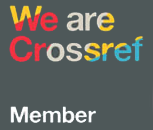The Bulletin of the Institute of Economics of the Russian Academy of Sciences № 6/2025. Economics and Management.
Svetlana V. Kozlova
Dr. Sci. (Econ.), Chief Researcher, Head of the Sector, Institute of Economics of the RAS, Moscow, Russia
ORCID: 0009-0009-1708-4945
TOPICAL ISSUES OF STATE PROPERTY MANAGEMENT IN 2025
 72-85 72-85 |
 304.22 KB 304.22 KB |
In the context of growing budget expenditures, improving the return on state assets is increasingly urgent, and nowadays achieving this goal by improving the institution of privatization/deprivatization is a major issue in the management of state property. This paper presents the results of an integrated analysis of the planned amount of funds coming into the budget from the use and disposal of state property over for the next three years, as well as their place in the revenue part of the federal budget. The paper also analyzes the situation in the institutional environment of state property management formed over the past few years by the end of 2025, viewed from the perspective of its effectiveness for the budget. Based on the analysis of specific privatization cases, it was concluded that recently the main focus of budget revenue generation has been not mass privatization, but mostly the preparation and sale of individual state assets (both previously confiscated and then sold, as well as belonging to the state from the outset). The study of these issues is particularly important both in terms of future prospects of our country’s social and economic development, as well as the achievement of the strategic goals currently facing Russia.
Keywords: efficiency of state property management, use of state assets, institutional environment.
JEL: Н82, Н19
EDN: RIQVNQ
DOI: https://doi.org/10.52180/2073-6487_2025_6_72_85
References
- Kozlova S.V. Transformation of state property management institutions: results of 2022-2024 // Bulletin of the Institute of Economics of the Russian Academy of Sciences. 2024. No. 5. Pp. 42–57. (In Russ.). EDN: HWKQIA. DOI: 10.52180/2073-6487_2024_5_42_57.
- Kononkova N.P., Mikhailenko D.A. New structure and functions of the Russian public sector in the face of global challenges // Public administration. Electronic Bulletin. August 2023. Issue No. 99. Pp. 144–160. (In Russ.).]
- Georgy Malginov on revenues from privatization and state property management in the draft federal budget for 2024–2026. (In Russ.)] https://www.iep.ru/ru/kommentarii/georgiymalginov-o-dokhodakh-ot-privatizatsii-i-upravleniya-gosimushchestvom-v-proektefederalnogo-byudzheta-na-2024-2026-gody.html?ysclid=mj06s9hsby554223592 (accessed: 01.09.2025).
- Kozlova S.V., Bratchenko S.A. Improving the state property management system: lessons from the past and directions of development // Russian Economic Journal. 2018. № 4. Pp. 56–68. (In Russ.).
- Natalya Kononkova, Diana Mikhailenko. State Property: Untapped Growth Reserve of Russian Economy // Problems of management theory and practice Problems of management theory and practice. 2015. № 2. Pp. 6–12. (In Russ.).
Manuscript submission date: 10.10.2025
Manuscript acceptance date: 18.11.2025
For citation:
Kozlova S.V. Topical issues of state property management in 2025 // Vestnik Instituta Ekonomiki Rossiyskoy Akademii Nauk. 2025. № 6. Pp. 72-85. (In Russ.). https://doi.org/10.52180/2073-6487_2025_6_72_85 EDN: RIQVNQ








